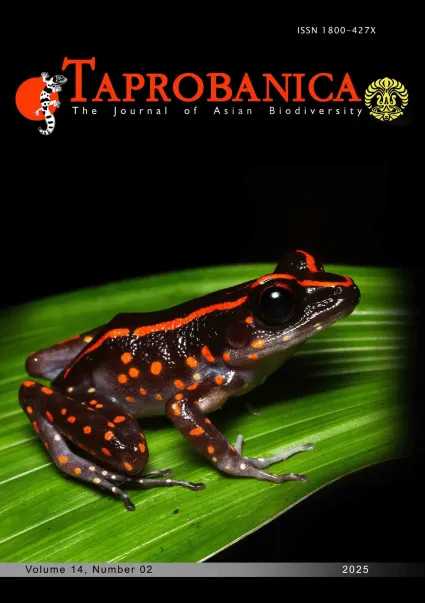

v14i2.395
Volume 14 | Number 2 | November 2025
Short Note
eISSN: 1800-427X (online)
DOI:10.47605/tapro.v14i2.395
Submitted date: 22 January 2025
Accepted date: 22 June 2025
Published date: 28 November 2025
Pp. 337–342.
Venomous snake distribution in Indonesia from citizen science and museum data
S. Anita*, T. Kodama, A.E.N. Herlambang, S.T. Jusivani, M. Mumpuni, I. Sidik, A. Hamidy, R. Eprilurahman & A. Riyanto
*Corresponding author. E-mail: syah014.brin.go.id
A recent study showed that reliable information about snake demography is needed in Indonesia for mitigating snakebite risk. There are more than 300 known snake species in Indonesia, of which 57 species, or about 19% belong to the Elapidae, and 22 species (about 7%) to the Viperidae. Only a few species of snakes in Indonesia are viewed as medically important species by the World Health Organization. Most of the snakes categorized as medically important are based on their number of snakebites, resulting in high levels of morbidity, disability, or mortality in humans. Another consideration in classifying the medical importance of snakes is how frequently the species encounters large human populations. This highlights the need to better understand venomous snake diversity and distribution, particularly in areas of high human population density.
Section Editor: Patrick David
DOI:10.47605/tapro.v14i2.395
Submitted date: 22 January 2025
Accepted date: 22 June 2025
Published date: 28 November 2025
Pp. 337–342.
Venomous snake distribution in Indonesia from citizen science and museum data
S. Anita*, T. Kodama, A.E.N. Herlambang, S.T. Jusivani, M. Mumpuni, I. Sidik, A. Hamidy, R. Eprilurahman & A. Riyanto
*Corresponding author. E-mail: syah014.brin.go.id
A recent study showed that reliable information about snake demography is needed in Indonesia for mitigating snakebite risk. There are more than 300 known snake species in Indonesia, of which 57 species, or about 19% belong to the Elapidae, and 22 species (about 7%) to the Viperidae. Only a few species of snakes in Indonesia are viewed as medically important species by the World Health Organization. Most of the snakes categorized as medically important are based on their number of snakebites, resulting in high levels of morbidity, disability, or mortality in humans. Another consideration in classifying the medical importance of snakes is how frequently the species encounters large human populations. This highlights the need to better understand venomous snake diversity and distribution, particularly in areas of high human population density.
Section Editor: Patrick David
- List of Articles & Contents





